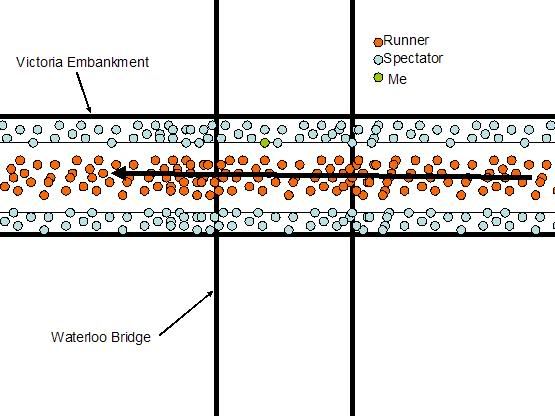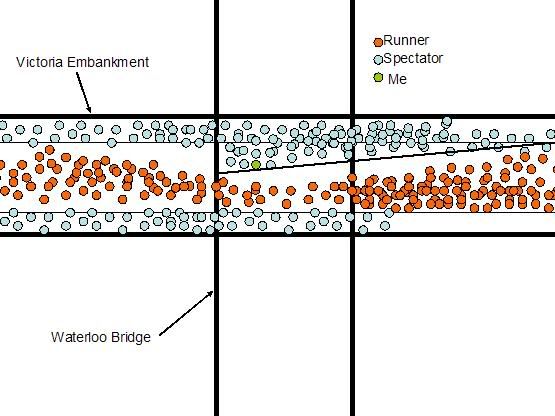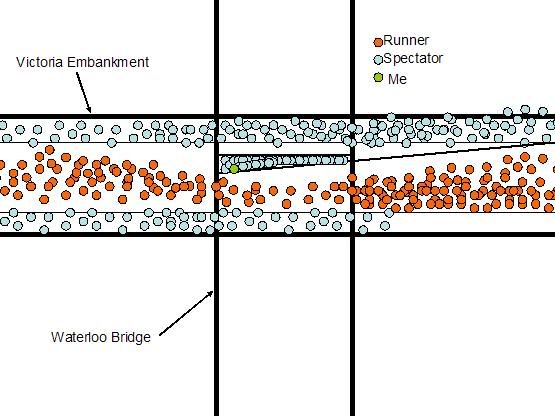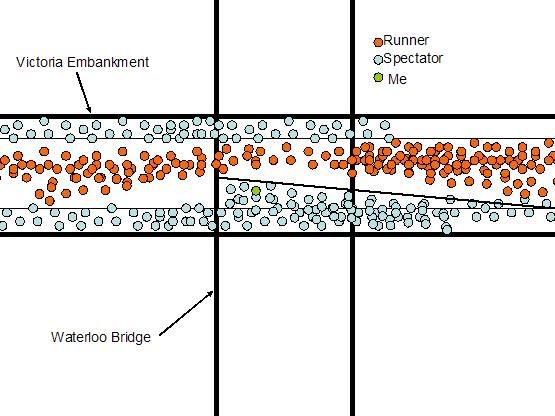How to cross a busy road without stopping the traffic, building a bridge or digging a tunnel
We stood in the drizzle to watch a friend run in the London Marathon this afternoon.
We moved around but used the Embankment as our final viewing spot. After seeing our friend (and the rest of his team, who were dressed as a centipede for reasons that were never fully explained), we needed to get to a tube station.
One problem: we were on the river side of the Embankment and Temple Station was on the other side. Between us and the Tube station was a road with hundreds of runners passing by. How to cross? There was no easily reachable tunnel and no easily reachable bridge. Waterloo Bridge does not count due to my failure to bring rock-climbing gear.
Fortunately, the Marathon organisers had devised a very neat, and simple, trick that could be used in far more situations.
First, let's set the scene. The picture below shows our predicament. Imagine that I am the green circle. I am trying to cross from top to bottom (yes... I know.... that means the diagram is upside down. Try to put that problem out of your mind for now.)

What the organisers did was very clever. They slowly, but assertively, drew the security line into the middle of the road, forcing the flow of runners towards one side of the road. Those pedestrians wanting to cross the road could move into the space on the road left behind:

Then... they closed off the pedestrians' escape route by opening up a channel behind us. Thus, we were trapped on an island in the middle of the road:

Then.... they used the same security rope trick as before to move the flow of runners to the other side of the road:

Success! We're now on the other side of the road!

